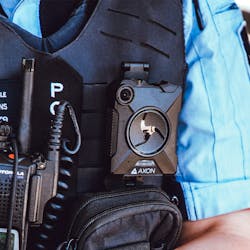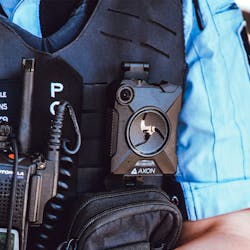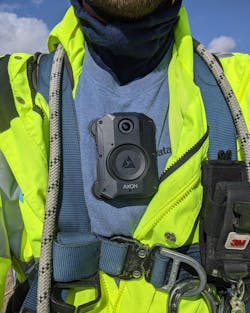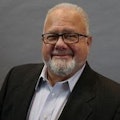Body-worn video technology finds new use cases in the private sector
Over the past two years, security technology and public safety policy and transparency have violently bumped symbolic heads. The shadow of body-worn video surveillance cameras has driven the public perception of deadly police encounters, primarily within the Black community and beyond. This recent exposure has put the technology on equal footing with myriad previous incidents that have grabbed headlines across the country and motivated a movement to mitigate these tragic encounters. As body-worn camera (BWC) proponents have long lauded the visceral perceived benefits to the public safety sector, there has been a steady migration of body-worn devices to other environments in the municipal and commercial business world.
Expanding Use Cases for BWCMunicipal agencies are seeing body-worn devices work their way into fire departments, courthouses, and onto the uniforms of emergency medical technicians, while on the commercial side, BWC solutions have infiltrated manufacturing plants, retail stores, warehouse facilities, healthcare and school facilities. The technology has even penetrated everything from private security officer companies to big-box retailers like Walmart, which issues proprietary body-worn cameras to monitor its In-Home delivery service team in at least three states around the country where drivers have access to private homes of absent owners to deliver perishable groceries directly inside waiting refrigerators.
In a recent interview with the Seattle Times, Axon, a leading manufacturer of BWC solutions, founder Rick Smith remarked that even though cameras like the GoPro have typified the consumer body-worn camera market for years, his company and others have gained traction with clients because its technology is better suited for evidence gathering given their 12-hour, full-police-shift battery life and delivery of accurate, non-erasable footage — even in low light — and crisp audio along with secure storage options.
Unlike the consumer-glad recreation BWC technology, vendors like Axon, Axis Communications and Tyco Exacq have specialized in integrating advanced data management platforms that can aggregate video, image, audio and document data to streamline processes and provide a data dashboard that is housed in a single place.
In fact, one Axon customer, GrassRoots, a lawncare service franchise company in the Southeast, even advertises that its lawn technicians wear body-cam devices to record the client’s treatment service. Security consultant Ray Bernard pinpointed seven emerging use cases for private sector BWC in a recent article on SecurityInfoWatch.com, saying mobile and BWC video have been proving to be of value in areas like operations safety, customer service, personnel training, policy and procedure compliance, and security officer interactions and patrols. Bernard added that all these use cases presented compelling reasons for integrators to expand into becoming a provider of body-worn and mobile video.
A Natural Progression into the Private Sector
Considering the proliferation of public/private partnership initiatives already in place securing cities that have been integrating corporate, commercial and public safety video surveillance feeds for close to two decades, it seems that the addition of private sector body-worn cameras was simply a natural progression. Michael Shore, who is the Vice President and General Manager of Enterprise Solutions at Axon certainly agrees that the conversion to private sector applications is here to stay.
“Absolutely. Body-worn cameras, both in the private and public sectors, add an extra element that fixed cameras don’t provide. In particular, body-worn cameras provide strong de-escalation capabilities and fill in many of the blind spots in typical surveillance feeds. In the private sector, cameras have traditionally been used by the security arm of the business for surveillance and monitoring, but body cameras are adding new value to the operations side of the business to increase employee safety and compliance, improve training and help reduce liability,” Shore says.Zach Jory, Axon’s Director of Marketing for Enterprise Solutions, points out that the growing demand for BWC devices in the private sector is being used more as a situational awareness tool and predictive analytics than forensic verification asset, although that role is not ignored.
“We are seeing major demand for body cameras, and maybe more importantly, demand for a video management solution that makes it easy to extract value from video, audio and image data. Situational awareness is big, and many security customers are leveraging our live-streaming capability for real-time situational awareness and using it as a force multiplier to gain a clear and immediate understanding of whether or not they need to dispatch more resources to handle an incident,” Jory confides. “This is helping with safety and also saving costs as resources are not dispatched unnecessarily. Verification is also a major application as iron-clad video documentation provides full transparency to dispel or verify any claims. Our security customers rely on BWC technology and our data management platform to get clarity into an incident.”
Shore and Jory cited several use-case examples of body-worn cameras being used by corporate or commercial security departments and shared some best practices that should be included in any BWC program.
- De-escalation: Live streaming helps companies or departments monitor and guide the appropriate response to mitigate dangerous situations in real-time. Customers also say that the presence of a body camera is often enough to de-escalate tense situations.
Jory cited an incident shared by Axon client Phillip Ortega of Western Regional Security where a security officer was speaking with a member of the public when an aggressive partner arrived on the scene. Once the partner noticed he was being recorded, his behavior immediately changed, according to Ortega.
- Dispelling false claims: When every incident is captured, accusations are more easily dispelled with video proof that is easily shared. An added advantage heard from customers is that guard professionalism improves with the addition of body cameras and has decreased the number of complaints received. Clients can employ the Axon digital evidence management platform to make it easier for private security customers to confidently share any data with law enforcement if any incidents become evidence.
- Improved training: Many of Axon’s customers are also using video footage to show real-world scenarios and demonstrate best practices and things to avoid as they train new employees or need to re-train existing ones. For existing employees that encounter tough situations, video replay is a powerful coaching tool.
Shores adds that organizations can incorporate their video surveillance data supplied by BWCs to enhance their security footprint and those safety and compliance issues crucial to overall business operations.
“We find that safety and compliance, and overall liability reduction with employees and customers is a major driver for body camera adoption. We see this in security businesses and also in commercial verticals like manufacturing, distribution and retail where the operations side of the business is often responsible for ensuring business continuity,” he points out. “Unprofessional behavior such as theft or being late to appointments is easily confirmed or dispelled with video data. Any safety problems or injury claims can also easily be handled. Another big advantage is customer-facing organizations can provide proof of work to dispel customer complaints and demands for refunds. Proof of work is big for private security companies, and also majorly valuable for customers we are serving in fields like HVAC, plumbing, lawn care, etc.”
How to Make BWC a Part of Business Operations
Jory recommends that organizations perform a thorough assessment of possible uses of body-worn camera technology within their business structure and then decide what business sectors they feel are most appropriate.
“We see more and more businesses having a critical need to gather rich data like video, still images and audio to ensure safety, accountability and efficiency. There are many sectors where this intersection is critical to the business and customers that we see getting tremendous value from body cameras,” Jory says, including sectors such as private security, healthcare security, venue security, corporate security, manufacturing, supply chain, field technician services, construction, mining, pharmaceutical and retail.
Having law enforcement actively coordinating with private organizations that are currently using internal bodycam technology as part of their overall video surveillance security strategy is another critical element of a successful security partnership according to Shore and Jory. They highlight the fact that as more and more private security agencies adopt body-worn cameras, the value of shared video evidence between frequent collaborators such as prosecutors, public defenders, and law enforcement agencies increases exponentially. Video documentation is indisputable and anytime organizations can share video with law enforcement, the path to resolution is clear and quick. Solutions providers like Axon are monitoring the future of the growing BWC private sector market with great interest, admitting that commercial businesses will provide the industry with its eventual roadmap for further expansion.
“An important trend and one most private security companies need to pay attention to if they want to grow, is an integrated security technology solution. Simply providing manned guard services is no longer good enough. Customers are coming to expect integrated services that connect people with technology to provide a better level of service,” Shore says. "The largest security firms in the world grew their business 7% last year vs 4% for the total market. The way they did this was through offering integrated security technology solutions, which was the fastest-growing business segment for those large security businesses. Adopting technologies like body cameras and smart data management platforms will be key to keeping up with the competition.”
About the Author:
Steve Lasky is a 34-year veteran of the security industry and an award-winning journalist. He is the editorial director of the Endeavor Business Media Security Group, which includes magazines Security Technology Executive, Security Business and Locksmith Ledger International and top-rated webportal SecurityInfoWatch.com. Steve can be reached at [email protected]
About the Author
Steve Lasky
Editorial Director, Editor-in-Chief/Security Technology Executive
Steve Lasky is Editorial Director of the Endeavor Business Media Security Group, which includes SecurityInfoWatch.com, as well as Security Business, Security Technology Executive, and Locksmith Ledger magazines. He is also the host of the SecurityDNA podcast series. Reach him at [email protected].



